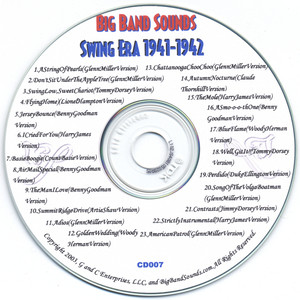
- 歌曲
- 时长
简介
Many people during this time began to take on Swing music as a way of life rather than the music of the day. Ballrooms were elegant and created a sense of affluence as dancers swayed around the floor. Swing had many meccas. Big Band sounds welled up amid the plush sophistication of the "biggest pleasure palace in the world," Hollywood's Palladium Ballroom, which had dancing room for 6500 people. Balconies contained restaurants and bars to accommodate the numerous customers. The Harry James band once drew 35,000 customers in one week. Roseland in New York was exquisite with mirrored walls, a ceiling studded with electric stars and refined hostesses. Bands competed to play in the exclusive night spots, playing for low wages and often losing money on their contracts. All this in an effort to get that magic radio wire. Radio stations quickly understood the value of playing recordings of vastly popular music. Often entire programs could be presented to audiences with just a stack of records and a disc jockey. Many great bands were launched into fame through this method. During this Swing Era records were ten-inch, 78-rpm discs. Although disc jockeys would play only a song or two from the record, collectors could not resist purchasing the album just for their favorite tune. Swing fans listened endlessly to records and also spent considerable time dancing to recorded music. But nothing would ever replace the aesthetic resonance of the Big Bands live.







